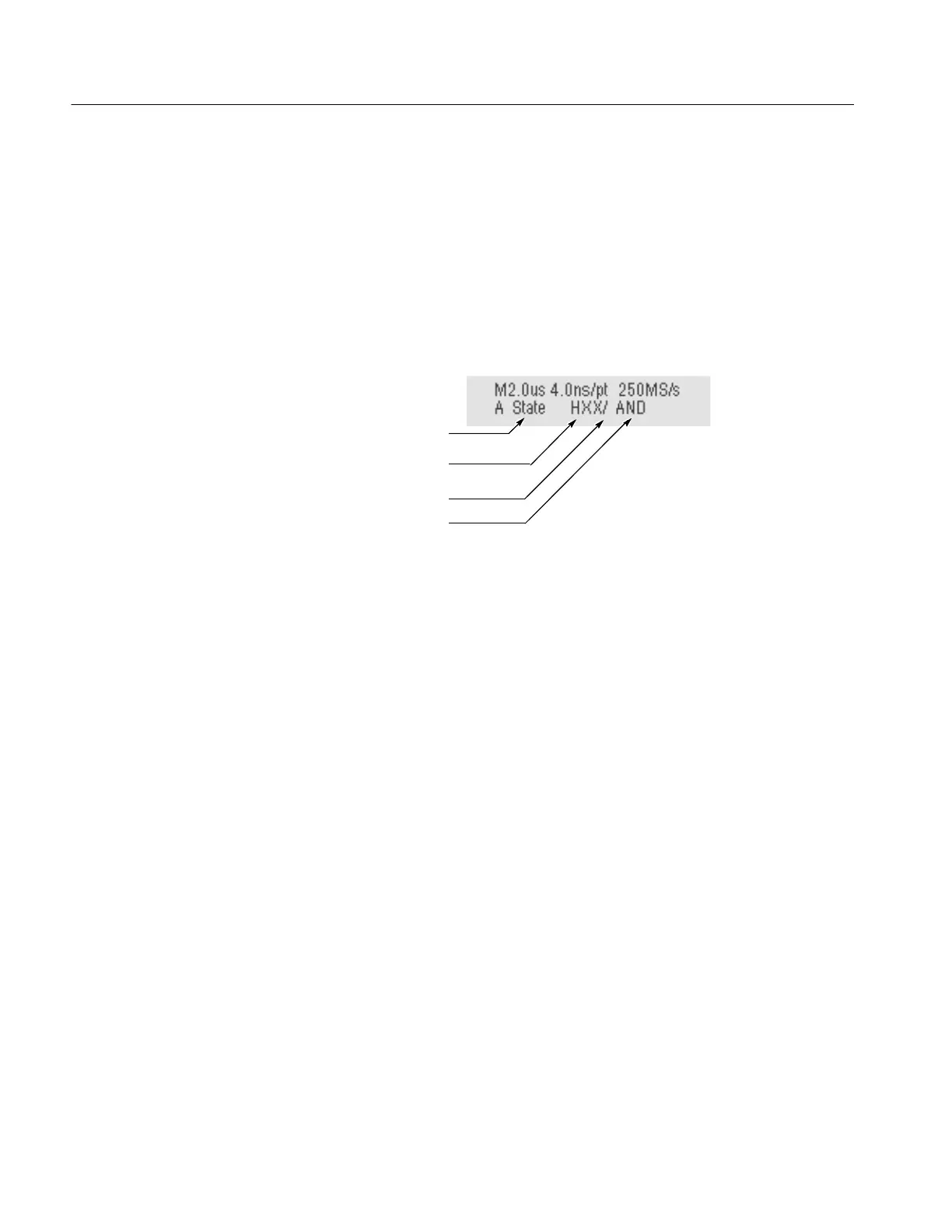Triggering
3-62
TDS5000 Series User Manual
Advanced Triggering
This section describes how to use the advanced triggers: glitch, runt, width,
transition (slew rate), pattern, state, setup/hold, window, video,andtimeout.
You can check the advanced trigger status in the readout. The readout indicates
the trigger type and then shows sources, levels, or any other parameters that are
important for the particular trigger type. Figure 3--23 shows an example readout
for the state trigger type.
Trigger type = State
Ch 1, 2, 3 Inputs = High,
Don’t Care, Don’t Care
Ch 4 Input = Rising Edge
Logic = AND
Figure 3- 23: Example advanced trigger readout
Each advanced trigger is described below.
Glitch Trigger. A glitch trigger occurs when the oscilloscope detects a pulse
narrower (or wider) than some specified time. You can set the oscilloscope to
trigger on glitches of either polarity, or to reject glitches of either polarity.
Runt Trigger. A runt trigger occurs when the oscilloscope detects a short pulse
that crosses one threshold but fails to cross a second threshold before recrossing
the first. You can set the oscilloscope to detect any positive or negative runt
pulse, or only those wider than a specified minimum width. Runt pulses can also
be qualified by the logical state of other channels.
Width Trigger. A width trigger occurs when the oscilloscope detects a pulse that is
inside or outside some specified time range. The oscilloscope can trigger on
positive or negative width pulses.
Transition Time Trigger. Transition triggering is based on the slope (change in
voltage/change in time) of a pulse edge. Use the transition trigger to trigger the
oscilloscope on pulse edges that traverse between two thresholds at faster or
slower rates than the specified time. You can set up the oscilloscope to trigger on
positive or negative edges.

